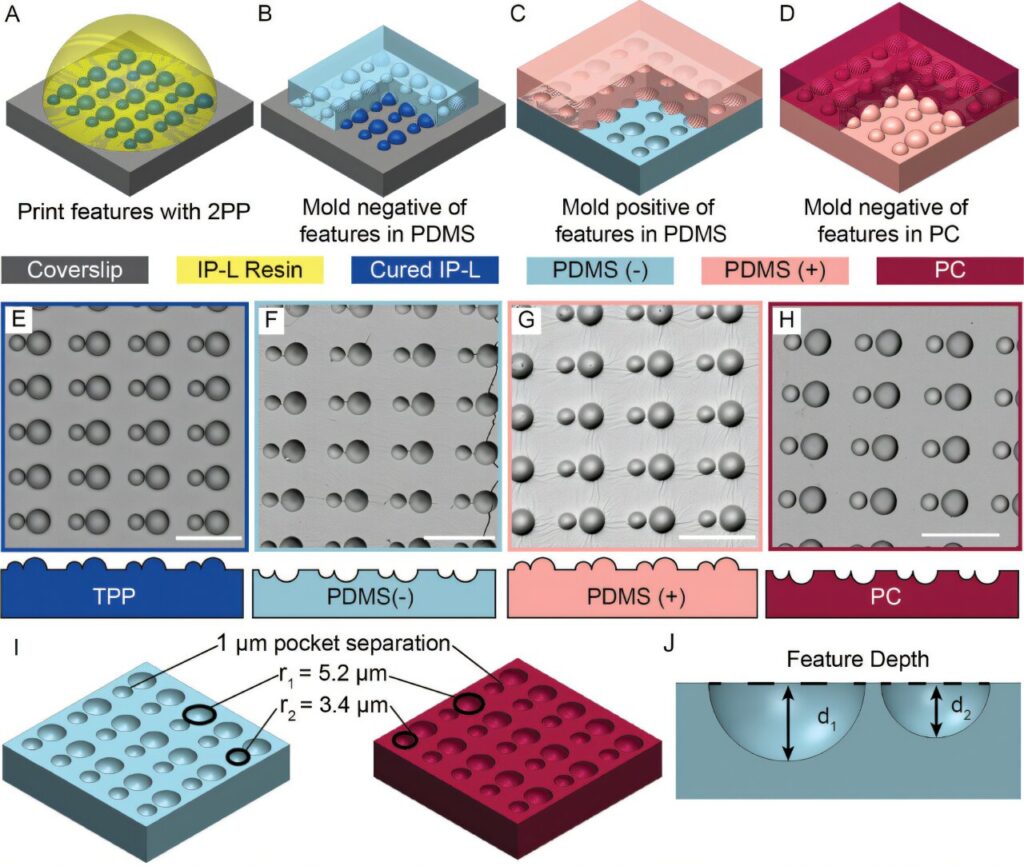When robots are made out of modular units, their size, shape, and functionality can be modified to perform any number of tasks. At the microscale, modular robots could enable applications like targeted drug delivery and autonomous micromanufacturing; but building hundreds of identical robots the size of a red blood cell has its challenges.
“At this scale, robots are not big enough to hold a microcontroller to tell them what to do,” explained Taryn Imamura, a Ph.D. Candidate in Carnegie Mellon University’s Department of Mechanical Engineering.
“Active colloids (the robots) have what we call embodied intelligence, meaning their behavior, including the speed at which they travel, is determined by their size and shape. At the same time, it becomes more difficult to build microrobots that have the same size and structure as they get smaller.”
As published in Advanced Materials Technologies, Imamura has found a way for researchers to control the size and structure of active colloids while yielding over 100x the amount created by earlier fabrication methods. She accomplished this, with support from undergraduate student researcher Nicholas Chung, by using physical templates to filter the size of the robotic components and create complex assemblies with fine control over body plan and module arrangement.
“By leveraging material properties of the templates, we’ve addressed manufacturing challenges so that we can produce these structures in bulk and study how these robots behave at the population level,” Imamura said. “We hope to use this technology to answer many outstanding questions about the dynamics and functionality of colloidal microrobots.”
Imamura, co-advised by Rebecca Taylor and Sarah Bergbretier, was able to increase the number of microbots assembled without compromising control over microstructure geometry by using materials with high surface energies, such as polycarbonate and polystyrene, for the templates and microspheres. This finding will lead to the assembly of more complex microstructures like microbots for targeted drug delivery and micro rotors for microfluidic mixing.
The team’s active colloids are also linked together using compliant DNA nanostructures—an innovation that makes them flexible, agile, and responsive to signals in their environment. Using biopolymers like DNA to construct these robots also lets researchers add sensors already available in the DNA nanotechnology literature to the robots to make a micro-mobile lab.
“We’ve shown that the DNA in our microrobots lets them perform specific actions—like controlled disassembly—when exposed to different stimuli,” she explained.
“We can imagine one of these microswimmers carrying a drug to a specific part of the body, and once it reaches its destination, the microswimmer receives a signal to disassemble. Once this happens, the microswimmer won’t move any further and the drug will stay in its destination.”
Typically, DNA nanotechnology can only be studied using expensive equipment. In this case, because the DNA is attached to micron-scale particles, researchers can observe any nanoscale phenomenon, such as the DNA structures changing shape, in real-time by observing changes in the active colloid’s movement under a microscope.
“Beyond creating populations of active colloids that are the same shape, same size, and flexibly linked, we’ve lowered the barrier of entry to this research,” Imamura said.
“I believe that getting more researchers from diverse backgrounds working on these complicated problems will help us go further, and by making this research more accessible, our work will help propel the field forward.”


